Beverly Gray's Blog: Beverly in Movieland, page 94
November 18, 2016
Tales from the Script: Writes and Wrongs in Hollywood

You’ve heard of Tales from the Crypt. Now here comes the equally scary Tales from the Script, a 2009 documentary about Hollywood’s most maligned above-the-line professional, the screenwriter. Twice yearly I teach the art of screenwriting to wonderfully eager and hardworking advanced students in UCLA Extension’s world-renowned Writers’ Program They dream of moving into the big leagues, and of course I try to help them make their dreams come true .But the working professionals seen in this film provide evidence that a screenwriter’s lot is not always a happy one.Tales from the Script also enjoys a companion volume that quotes from conversations with some 50 of the industry’s finest. The documentary combines talking-head interviews with artfully chosen movie clips (from such films as The Way We Were and Barton Fink) that illustrate how screenwriters are regarded in Hollywood. One of my favorite clips is the scene from Get Shorty in which a self-confident Delroy Lindo assures a wide-eyed John Travolta that writing a screenplay is a cinch. Not so, of course. First of all, there’s the craftof writing. The job is simply more complicated when you’re trying to fit a lot of material into a two-hour framework. Jane Anderson, whose credits include TV’s acclaimed Olive Kittridge, explains it this way: “Films are architecture, and you’ve got to get your blueprint down.”
Then there’s the basic difficulty in getting in over the threshold, which may well entail lying about connections you don’t really have. Even if your screenplay is sold, you’ll probably be removed from your material as much as possible. And a work that’s optioned isn’t necessarily produced, so your chances of seeing your own movie on screen—whether or not it’s in a recognizable form-- are slim. Shane Black, who’s enjoyed massive hits like Lethal Weapon, also sees the downside of success: there’s the danger of believing your own hype. My colleague Dennis Palumbo, who turned from screenwriting (My Favorite Year) to psychotherapy, characterizes screenwriters as “egomaniacs with low self-esteem.” Ouch!
If you’re a screenwriter, you’re doomed to take endess meetings with mid-level execs who “can’t relate to anything they haven’t seen before.” And changing tastes make small, sensitive movies hard to peddle. Screenwriter Naomi Foner (Running on Empty) notes that “Ordinary People wouldn’t get made today. That would be a Lifetime television movie.” In Tales from the Script, writers talk frankly about navigating sit-downs with producer types. My old friend John Brancato long ago used to crank out Roger Corman sci-fi flicks with his writing partner Mike Ferris. They’ve since graduated to big paydays like Terminator 3, but John still knows his place in the Hollywood pecking order. His advice: “Let the producer take the big chair. Always sit on the couch.”
The writers in Tales from the Script freely admit there are times when a director can lift their work to a higher level, and when an skilled actor can show them that many of their words are just not necessary. And sometimes a writer gets very lucky, as when newcomer Justin Zackham got the perfect director and cast for his first feature, 2007’s The Bucket List. But that’s not often the case. Usually screenwriters, even the most successful, find themselves struggling with both their craft and their industry. Said one, as you move through your career, “the rules don’t actually change. You just get lied to by a higher caliber of person.” Still, screenwriters keep at it, sometimes turning out upwards of 46 drafts (for Amadeus) in hopes of striking cinematic gold – or at least writing that one really good sentence.
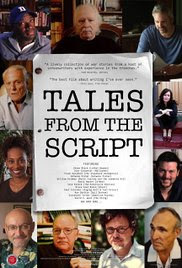
Published on November 18, 2016 10:34
November 15, 2016
Beyond the Stars: Farewell to Robert Vaughn and Lupita Tovar
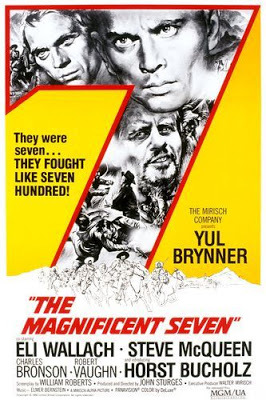
It’s getting colder, and even in Southern California there’s change afoot. In Hollywood, our supply of legendary names is diminishing, one by one. By chance, two of the stars who left us in the past week have had – like so many other Hollywood figures – a Roger Corman connection.
On Friday, November 11, we lost the urbane Robert Vaughn, an actor who always projected intelligence and wit. He proved his intelligence by earning a master’s degree in theatre, followed by a PhD in communications from the University of Southern California. I don’t know Vaughn’s early films, although he was nominated for an Oscar for his role in a soapy 1959 family saga called The Young Philadelphians. But he was magnificent as a quietly desperate gunslinger in The Magnificent Seven (1960). He must have enjoyed the role because he essentially played it a second time in 1980’s Battle Beyond the Stars, the space epic with which Roger Corman launched his ramshackle little studio facility in response to the popularity of Star Wars. Both films were essentially creative knock-offs of Akira Kurosawa’s action classic, The Seven Samurai. In Battle Beyond, Vaughn played his scenes not with Yul Brynner and Steve McQueen but rather with George Peppard and Sybil Danning (as a Valkyrie warrior). But those on the Corman set agreed he remained a total professional, despite the scruffy surroundings..
Of course Vaughn’s real claim to fame was playing Napoleon Solo in TV’s dryly amusing James Bond spoof, The Man from U.N.C.L.E.(1964-1968). The show’s popularity coincided with my college years, and I rarely missed it. Among its novel qualities was that – in the midst of the Cold War -- it showed an American (Vaughn) and a Russian (played by the very un-Russian David McCallum) working together to defeat the world’s baddies. In fact, Vaughn was in real life a political idealist as well as a committed progressive, working vigorously for Senator Eugene McCarthy and against the Vietnam War. There were rumors that he planned to run for office himself, but he admitted that after the assassination of Robert Kennedy, “I lost heart for the battle,.”
Robert Vaughn was 83; Lupita Tovar was an astonishing 106 when she died on November 13. Born in Oaxaca, Mexico, she made the move to Hollywood, where she had her greatest successes in Spanish-language features that were filmed at night on the sets of English-language productions. Most notably, she starred in the 1931 Spanish-language version of Dracula that made use of the sets designed for the Bela Lugosi film. The Spanish-language Dracula, which is now in the collection of the Library of Congress, was produced by Paul Kohner, who would be Tovar’s husband from 1932 until his death in 1988. In 1938, Kohner would become a noted talent agent: over the course of his career he would represent such major talents as Greta Garbo, Maurice Chevalier, Billy Wilder, and Henry Fonda. He also repped the Swedish auteur Ingmar Bergman, as well as my former boss, Roger Corman. These connections are what led to Roger distributing Bergman’s masterful Cries and Whispers in American drive-ins.
One product of this marriage of a Mexican Catholic and an Eastern European Jew was actress Susan Kohner. Her most notable role came in the 1959 Douglas Sirk remake of Imitation of Life. A major plot strand involves the suffering of a half-black young woman who tries to pass as white. In a curious example of Hollywood’s casting whims, Kohner took on this role, and was rewarded with an Oscar nomination. But the extended Kohner family deserves its own post – one of these days.
Published on November 15, 2016 12:28
November 11, 2016
Fried Green Tomatoes in My Stomach, and Georgia on My Mind
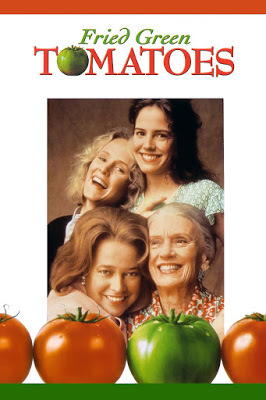
If my vowels are getting broader and you hear me starting to drop final g’s, it’s because I’m newly back from Georgia, where I flew both to attend an all-day meeting and to hang out with good friends. Georgia, I learned, is today a moviemaking mecca. Notably, seven seasons of TV’s The Walking Dead have been shot in the vicinity of Atlanta. I admit I didn’t spot any members of the zombie apocalypse roaming the hip streets of Decatur, nor were they hanging out near Margaret Mitchell’s family monument in historic Oakland Cemetery. Still, the state of Georgia seems to be a place where anything is possible. For one thing, it does a great job of masquerading as a neighboring state in such Hollywood confections as Sweet Home Alabama.
Georgia plays itself in a number of well-known movies. In 1989, the Oscar-winning Driving Miss Daisy was shot in the city where it was set, illustrating the lifestyle of a certain well-entrenched Jewish enclave within Atlanta. The Temple, an historic congregation founded by German-Jewish immigrants in 1860, features prominently in the film. So the plot strand about the bombing of The Temple in 1958 by white supremacists was staged in and around the 1931 neo-classical building where the actual incident took place.
On a previous trip to Georgia, I’d been up to the red clay country in the northern part of the state. There I stumbled upon (though, thankfully, not into) a gorge that appeared in a major novel by the Georgia-born author, James Dickey. Deliverance, a 1972 Oscar nominee, featured Jon Voigt and Burt Reynolds as city dwellers who, on a rafting trip, try going back to nature and get more than they bargained for. (Perennial character actor Ned Beatty also got his start on this film, because he had the good fortune to be a Southerner involved in local theatre.) My spouse and I might never have seen the gorge, except for the fact that folks in the area kept assuming we’d be having lunch at the Dillard House in Rabun County. The Dillard House, a legendary restaurant since early in the 20th century, attracts customers from near and far because of its delicious (and inexpensive) down-home cooking. It truly lives up to its reputation, and a glass case in the lobby pays tribute to the shooting of Deliverance nearby. Yes, Hollywood moviemakers always appreciate a good, hearty meal.
This time around, my Georgia hosts took me to the tiny town of Juliette, which is known to Hollywood as the place where 1991’s Fried Green Tomatoes was filmed. Based on Fannie Flagg’s Southern tragicomic novel, Fried Green Tomatoes at the Whistle Stop Café, the movie features all-stars Jessica Tandy and Kathy Bates (as a frumpy Alabama housewife who learns how to remake herself), along with Mary Stuart Masterson and Mary-Louise Parker. (My old New World Pictures buddy Stan Shaw plays Big George.) The younger actresses appear in long flashback sequences illustrating Tandy’s tumultuous but tender growing-up years. After a family tragedy they evolve into close friends who open a small-town café featuring (yup!) fried green tomatoes, along with other Southern delicacies. The building used in the film was not originally a restaurant, but -- after the film crew moved on -- someone got the bright idea of starting one. And so the Whistle Stop Café has been there ever since, attracting a crowd of folks hungry for good tomatoes, good barbecue, and good pie.
And where, would you ask, did Hollywood shoot that most cherished of Southern movies, Gone With the Wind? Would you believe Culver City, California?
This one’s for Ken and Terri Bryson – big thanks to y’all for a delightfully down-home weekend.
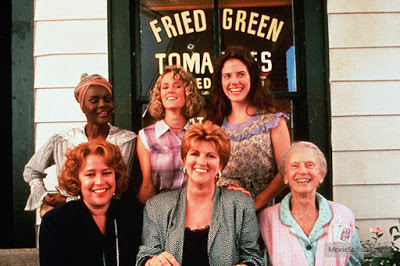 The cast with author Fannie Flagg in front of the Whistle Stop Cafe set. (That's Cicely Tyson at rear left.)
The cast with author Fannie Flagg in front of the Whistle Stop Cafe set. (That's Cicely Tyson at rear left.)
Published on November 11, 2016 14:37
November 8, 2016
Movies in the Sky; An Election on the Ground
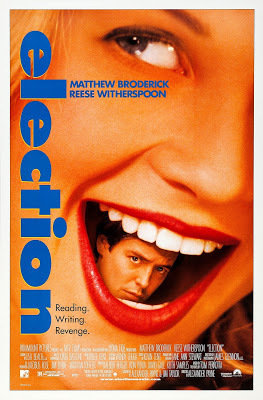
Flying through the air with the greatest of ease (while taking a short trip from LAX to Atlanta and back), I couldn’t help thinking about today’s election. Like most Americans, I am thoroughly sick of all the ugliness of this election cycle. But when I chose the movies to watch on my seat-back monitor, I couldn’t help making connections between Hollywood and what’s going on in our nation’s polling places.
Leaving Los Angeles for Atlanta, I caught up with a 2015 film I hadn’t seen in theatres, David O. Russell’s Joy. This “based-on-a-true-story” flick about a frazzled young mother whose strong sense of self-worth leads her to entrepreneurial success was one of several 2015 movies that exalt the notion of female empowerment. Look at the roles of the women nominated for Best Actress for a 2015 film. I didn’t see Charlotte Rampling in 45 Years, so I’ll skip past that one. But in Carol, both Cate Blanchett and Rooney Mara play women who dare to make an unconventional choice that defies society’s expectations about gender roles. In Joy, Jennifer Lawrence takes on the part of the real-life Joy Mangano, who invented a miracle mop and became a tycoon after daring to shill it on QVC TV. The message: be your authentic self, and good things will follow. In Brooklyn, Saoirse Ronan is a shy young Irish lass who comes into her own in commerce and in love, both through her native smarts and through an emerging independent streak. The 2015 Oscar went, thougjh. to Brie Larson. Larson’s character in Room starts out as a victim of abduction and rape. But the film’s focus is on how this unfortunate and very young woman saves herself and her son through a gutsy determination to escape their captor. None of these films is overtly political, but -- at a time when we’re voting on the possibility of the first U.S. female president -- all these feisty females seem to convey a sense of “Yes I can.”
Returning to L.A., I was amused to find that someone at Delta Airlines had programmed a quartet of classic choices relating to elections and the presidency. I could have watched Dave, or Napoleon Dynamite(you may recall he’s trying to help his friend Pedro become president of their high school class). Instead, I opted for two favorites of mine, one of them oldish and one much older.
Election was many viewers’ first introduction to the work of Alexander Payne. It’s the hilarious but pointed story of a conscientious high school history teacher (Matthew Broderick, far removed from his laid-back Ferris Bueller mode) who ruins his life when trying to stop an over-zealous high school high-achiever (Reese Witherspoon) from cheating her way into the office of student body president. Anyone who mistrusts earnest blonde women will probably make some connections between Witherspoon’s Tracy Flick and one current candidate for high office.
After watching Election, I switched to one of my favorite movies of all time, Orson Welles’ 1941 masterpiece, Citizen Kane. (How terrific to find this available on an airplane!) The story of an idealistic but brash young American newspaper publisher who evolves into an unloved and unloving mogul contains so many themes that I can’t broach them all here. But at one point Kane’s cocky enough to launch a campaign for governor. His “October surprise” is the revelation in rival papers that he’s been caught in a love nest with a pretty blonde.. On election eve, his New York Inquirer prints up two possible headlines: “Kane Wins in a Landslide” or “Fraud At the Polls.” Sound familiar?
Published on November 08, 2016 12:09
November 4, 2016
Carmen de Lavallade: A Black Swan at the Movies
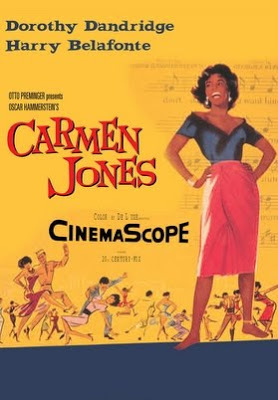
There was a time when the field of dance, like the recent Academy Award ceremonies, deserved a hashtag along the lines of #Oscarsowhite. Ballet meant a corps of white swans, not black ones. Theatrical dance, like the kind featured in Broadway musicals, demanded caucasian faces and bodies. Fortunately that situation has changed for the better. Witness the success of Misty Copeland, a star of today’s American Ballet Theatre. On Broadway, African-American dancers have far more opportunities than they once did, and some major hits (The Lion King and The Book of Mormon among them) demand performers with dark skins.
A pioneer in the field of classical dance was Janet Collins, the first African-American ballerina to perform with the Metropolitan Opera. Collins became a powerful inspiration to her young cousin, who was born with the mellifluous name of Carmen de Lavallade. Carmen—my very first teacher at Lester Horton’s Dance Theater—eventually left Los Angeles to appear as a featured dancer in a Truman Capote/Harold Arlen musical set in the West Indies. Called House of Flowers, it was a famous flop. But Carmen, undaunted, stayed on in the Big Apple, performing with major dance companies like that of her good friend and fellow Horton alum, Alvin Ailey. She also taught for ten years in the Yale School of Drama, instructing such budding actors as Sigourney Weaver and Meryl Streep in the secrets of stage movement. Now, at 85, she is revered within the dance and theatre communities. I was lucky to join in the ovation when she performed her one-woman show, As I Remember It, in her original home town. (I have never in my life seen so many proud sisters, cousins, and aunts!)
As I Remember It is a chronicle of Carmen’s eventful life, presented on a set that allows for the screening of photos and film clips. And it’s the movie aspects of Carmen’s life that I want to explore here. Early on, as a Horton dancer, she was sent to appear in kitschy screen musicals of the era, with titles like White Savage, South Sea Woman, and 3-D Follies. Lester Horton, to his credit, refused to segregate his very interracial company by race, so Hollywood’s demands for an all-white troupe or all-black troupe of dancers were summarily turned down. But, when Horton’s integrated dancers showed up to shoot in an ersatz exotic locale, the studios knew what to do. Like all the other participants in these song-and-dance extravaganzas, the very light-skinned Carmen was forced to enhance her look by daubing on a Max Factor makeup concoction called Negro #3. (In her show, she quipped wryly that this makeup worked beautifully on white skin, but actual African-Americans discovered it gave their skin tones a greenish cast.)
I loved seeing clips of Carmen as a lady-in-waiting in The Egyptian, and dancing up a storm in Carmen Jones. Later, in 1959, she had a short but potent dramatic scene opposite Harry Belafonte in the crime drama, Odds Against Tomorrow. In 1961, with her New York dance career on the rise, she was invited to perform a duet to the poignant “Cry Me a River” on the era’s biggest variety program, The Ed Sullivan Show. Only problem: her dance partner for the number, future choreographer Glen Tetley, was white. Only the last minute substitution of a black dancer allowed the show to go on as scheduled.
Carmen has continued to act in movies, playing nice little roles in John Sayles’ Lone Star and Stephen Daldry’s The Hours. But she needs to be seen in person, lighting up a stage.
Here's a link to my earlier tribute to Carmen, chronicling the lunch we shared in 2015. What a glorious day for me! And this clip contains Carmen's best scene with Harry Belafonte.
Published on November 04, 2016 10:00
November 1, 2016
Ron Howard Gets a Scare on Halloween
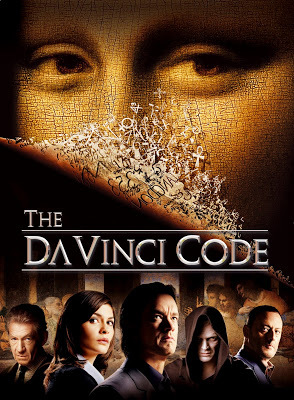
On Halloween, the entertainment section of the Los Angeles Times was full of the news that Ron Howard’s latest, Inferno, had just gone down in flames. Weekend stats showed it well behind the earnings of Boo! A Madea Halloween. Ron Howard has long been one of Hollywood’s most bankable directors, someone whose 23 films have brought in more that $3.6 billion (with a b) worldwide. At the start of Halloween weekend he was releasing an action-packed Tom Hanks-starring thriller, based on the third volume of a convoluted Dan Brown series that started with the mega-selling The Da Vinci Code. And yet Inferno performed anemically, well down in second place to a Tyler Perry farce that had opened the week before.
There was a time when any movie directed by Ron Howard was treated in the media with condescension. After all, the public knew him first as the cute little kid on The Andy Griffith Show and then as perennially innocent Richie Cunningham on Happy Days. Even one of the very best films from Howard the director, 1995’s Apollo 13, caused the L.A. Timesreviewer Kenneth Turan to smirk that Howard’s uplifting handling of this real-life material showed him to be “the master of Opie-vision.” Despite the film’s huge technical challenges, broad social canvas, and powerfully realistic capturing of a landmark event in the history of the U.S. space program, many film experts chose to see Apollo 13as the work of a plucky young man venturing into someone else’s sandbox.
When he made Apollo 13, Howard was graduating from amiable comedies like Splash, Cocoon, and Parenthood. He tried for high drama with a story of Chicago firefighters, Backdraft, and ventured an epic romance with Far and Away , but the results of both left something to be desired. Apollo 13, though, was an artistic and box office triumph. Howard was honored by the Directors Guild for this film. When Oscar nominations were announced in early 1996, Apollo 13 was one of 5 candidates for Best Picture. But, in a serious snub, Howard’s name didn’t show up on the list of Best Director candidates. (The big winners that year were Mel Gibson and Braveheart.)
It was 2001’s A Beautiful Mind that served as Ron Howard’s breakout film. This moving and inventive story of mental illness won Howard Oscars as both director and producer. And from this point forward, he was finally taken seriously as a mainstream Hollywood director. The acclaim has helped him to do what he has always craved: avoid typecasting by taking on a wide range of styles and subjects. Since A Beautiful Mind, he has made a western (The Missing), a documentary (The Beatles: Eight Days a Week), a thrilling auto racing film (Rush), a costume epic (In the Heart of the Sea), and of course the three films based on Dan Brown’s well-stuffed novels. His Frost/Nixon, an up-close look at the interaction of a disgraced U.S. President and a media star, was also a Best Picture and Best Director nominee. Curiously, Howard’s one return foray into comedy, The Dilemma, is doubtless the weakest film on this entire list. As someone who has always enjoyed Howard’s light touch with comic romance (I adore the mostly overlooked EdTV), I hope he swoops in on that genre again soon. But apparently his next work will be a biopic about F. Scott Fitzgerald’s troubled wife, Zelda. Starring Jennifer Lawrence, it should be something to see.
As for Dan Brown, let’s hope he is done with saving the world from mystical conspiracies. I want Ron Howard back making better, richer films.
A recent L.A. Times story ranks Ron Howard’s 23 films in order of quality. I mostly agree with this rundown.
Published on November 01, 2016 13:01
October 28, 2016
The Driverless Car: Dirty Trick or Treat?
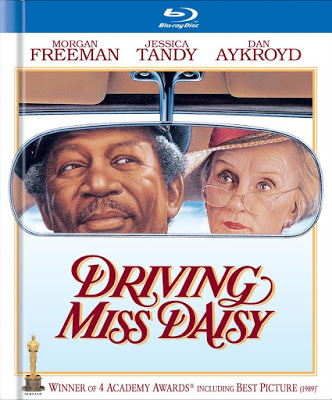 The disastrous bus crash outside of Palm Springs that claimed 13 lives seems to have been caused, at least in part, by the actions of the driver. The evidence is that he failed to hit the brakes when his bus approached a big-rig. Such lapses on the part of drivers encourage the idea that maybe we’d all be better off with driverless vehicles, which rely on modern technology (and not human brainpower) to help avoid accidents. But as Halloween approaches, it’s time to consider what the movies would be like if vehicles functioned without help from humans.
The disastrous bus crash outside of Palm Springs that claimed 13 lives seems to have been caused, at least in part, by the actions of the driver. The evidence is that he failed to hit the brakes when his bus approached a big-rig. Such lapses on the part of drivers encourage the idea that maybe we’d all be better off with driverless vehicles, which rely on modern technology (and not human brainpower) to help avoid accidents. But as Halloween approaches, it’s time to consider what the movies would be like if vehicles functioned without help from humans.Can you imagine a future with no bus drivers? Our movies and television shows just wouldn’t be the same. If buses drove themselves, Ralph Kramden--played by Jackie Gleason in a series of TV sketches known as The Honeymooners—would be out of a job. And the movie Speed, in which Sandra Bullock has to get behind the wheel of a L.A. city bus that’s been rigged with explosives, wouldn’t be the same at all if the bus did all the driving sans human intervention.
Another movie that just wouldn’t work in the world of self-driving vehicles is Nicolas Winding Refn’s The Driver. It features a Hollywood stunt driver (Ryan Gosling) who moonlights as a getaway driver for criminal types. These shady gigs inevitably lead him into the L.A. criminal underworld, where he finds himself challenged to hold onto his basic humanity. If the driver, instead of being all too human, is in fact My Mother the Car, the movie loses the entire moral conundrum element.
Of course there’s something to be said for driveless cars in those instances when the car’s owner would rather be smooching with his girlfriend in the back seat than signaling for left turns. When your libido is otherwise occupied, it must be a boon to leave the driving to an automaton.
But it would be a real loss for screenwriters everywhere if driverless cars were to make cabbies unnecessary. Screenwriters are adept at creating colorful characters, full of wisecracks and wisdom, who give taxi scenes ethnic flavor and sometimes add significantly to a movie’s messaging. There’s a smart moment early in Guess Who’s Coming to Dinner when the lovebirds played by Katharine Houghton and Sidney Poitier are nuzzling each other in the back seat of a taxi during a ride from San Francisco International Airport. The first interracial kiss ever seen in a Hollywood film appears solely in the cab driver’s rear-view mirror. And on the cabbie’s face is a look of total disgust. In that small moment, director Stanley Kramer silently conveyed what he knew would be one form of public reaction to this groundbreaking interracial love story.
A cab driver of another sort is featured in one of my favorite World War II musicals, On the Town. Who can forget Betty Garrett as a pert lady cabbie? The audience loved her determination to show the innocent young sailor played by Frank Sinatra far more than he would ever find in his grandpa’s New York City guidebook.
And of course if you have driverless taxis, you can’t possibly make a movie like Taxi Driver, in which Robert De Niro stars as Travis Bickle, an ex-Marine turned vigilante. Bickle’s life inexorably changes when a teenaged prostitute played by Jodie Foster enters his cab. A driverless taxi would surely not have the same, very human reaction to Foster’s plight.
And hey, if Driving Miss Daisy played out in a driverless vehicle, how would Jessica Tandy’s little old lady get the life lessons she so badly needs?
Published on October 28, 2016 10:53
October 25, 2016
Fun with Tom and Jane: Saying Goodbye to Tom Hayden
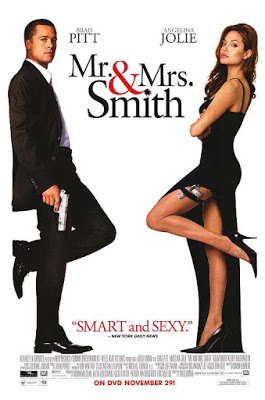
Long before there was Brangelina, we had Tom & Jane, two celebrity spouses who taught us what it meant to be a power couple. Today my morning newspaper was full of the death (at the early age of 76) of Tom Hayden: activist, politician, and former husband of Jane Fonda. They were married between 1973 and 1990. During that time, Fonda made important movies like Julia (1977), Coming Home (1978), and The China Syndrome (1979) that expressed the couple’s uncompromising political beliefs. Hayden himself was no actor, but he was often seen on camera. From his days as a student activist loudly opposing the Vietnam War, and then as a defendant in the Chicago 7 trial stemming from disruptions at the 1968 Democratic National Convention in Chicago, he was prominently featured in news footage. Once he became a California state legislator and then an elder statesman supporting progressive causes, he appeared in countless documentary films. So in his heyday he was as prominent a public figure as his famous wife.
Hollywood has always had its power couples. Think, for instance of Mary Pickford and Douglas Fairbanks. They were both stars of the silver screen, and she was also a behind-the-scenes power in the establishment of the motion picture industry as we know it today. If we skip a number of years, there were Lucille Ball and Desi Arnaz, a real-life couple who revolutionized the TV sitcom and founded a production empire whose impact is still being felt. But such powerful people seem to have a hard time making a go of marriage over the long haul. The glamorous Pickford-Fairbanks union lasted only 16 years. Lucy and Desi, unforgettable together as a comic duo, couldn’t survive as a couple for more than 20. And of course Tom Hayden and Jane Fonda called it quits after 17 years, with both going on to wed others. (I have a friend with strong left-of-center political leanings who took their divorce quite personally. When they were together, romantically as well as politically, she felt all things were possible. Once they split, the world didn’t seem quite such a hopeful place.)
What is it with showbiz power couples, anyway? Not all of them are leaders within the industry. Some, like Gable and Lombard, are simply beautiful people who can be admired and envied by the public because of their aura of Hollywood glamour. (The tragedy of Lombard’s plane-crash death of course helped to make their pairing all the more starry.) But Angelina Jolie and Brad Pitt as a couple were more than just pretty faces. Above and beyond her acting career, she has been recognized world-wide for her humanitarian efforts on behalf of refugees and needy children. And she is starting to make her mark as a director of tough-minded dramatic films, like In the Land of Blood and Honey. Even her health challenges (like her decision, as a carrier of a defective BRCA 1 gene, to undergo a double mastectomy) have had worldwide impact. Pitt, meanwhile, has juggled acting roles along with a new commitment to producing films. He was behind last year’s provocative The Big Short, as well as 2016’s much-admired Moonlight.
I think we like power couples because they “prove” to us that it’s possible to have it all: good looks, high achievements, and a romantic relationship that underpins all the rest. Only problem-- high-achievers don’t seem to make the best long-term spouses. I’m no expert on what went wrong with Jane and Tom, or with Angelina and Brad, but it’s sad that they don’t seem able to live happily ever after.
Published on October 25, 2016 16:21
October 21, 2016
American Exceptionalism at Work in “American Beauty”
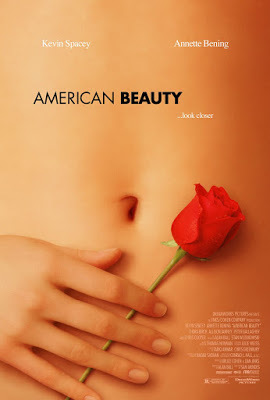
Right now you can watch in theatres a small indie called American Honey, a road trip flick that won the jury prize at this year’s Cannes Film Festival. And this weekend sees the opening of American Pastoral, an ambitious family drama based on one of Philip Roth’s most acclaimed novels. Directed by and starring Ewan McGregor (in the unlikely role of an American Jewish husband and father coping with life in the Sixties), it made its debut at the Toronto International Film Festival.
It has always amazed me how many movie titles start with the word American. Off the top of my head, there’s American Graffiti, American Gigolo, and American Ninja. Not to mention An American in Paris, An American Werewolf in London, and An American Tail. Much more recently we’ve had American Heart, American Pie, American Psycho, American Hustle, and American Sniper. On TV, of course, there was until recently American Idol (based on a British show much more modestly called Pop Idol.) And, currently, American Horror Story and American Crime Story. Plus, of course, The Americans. When Richard Schickel published a biography of the brilliant but racist filmmaker, D.W., Griffith, he gave it the subtitle “An American Life.” And Paula Uruburu’s fascinating look at the life of notorious showgirl Evelyn Nesbit is called American Eve.
What does it say about the American people that we seem to respond to titles that shine a spotlight on our national character? The recently popular phrase “American Exceptionalism” seems to make the point that we who live in the United States (Canada and Mexico don’t count) think of ourselves collectively as awfully important on the world stage. Sometimes we’re a force for good and sometimes for evil, but nothing done by an American can be considered insignificant. And when an American steps forward, for good or for ill, he or she is not just an individual but rather a representative of our entire culture.
All of which leads me to mention one of the bleakest Oscar winners of all time, 1999’s American Beauty. I watched this film, starring Kevin Spacey and Annette Bening, again recently, and was blown away by its craftsmanship and its power. (Kudos both to director Sam Mendes and screenwriter Alan Ball.) American Beauty is undeniably dark in its depiction of suburban life, and of the disintegration of the nuclear family unit. As is the case with the great Sunset Blvd., it is narrated by a dead man, one who was not really living even prior to his abrupt demise. In American Beauty, many of the less-appealing aspects of American life are put under the microscope: crass materialism, homophobia, drug use, obsessive body culture, the inability of even the most articulate of wage-slaves to share what’s on their minds with those they love. The protagonist, disappointed in so many aspects of his materially comfortable life, lusts after a teenage girl, in a way that is calculated to make us (or at least most of us) feel uncomfortable.
And yet . . . and yet. The other side of American Beauty is one that recognizes that there is beauty in American life. The film’s most sensitive soul is (of all things) a young drug dealer, whose home life is horrendous but who’s blessed with the ability to recognize loveliness when he sees it. The film’s advertising catchphrase is “Look closer,” and by the end of the film the doomed hero has recognized that life—his life, American life—is crammed full of simple and beautiful things. Like a plastic bag blowing in the wind. Or a really terrific film.
Bruce Tracy, this one's for you.
Published on October 21, 2016 12:18
October 18, 2016
The King and We: Thailand and the Movies
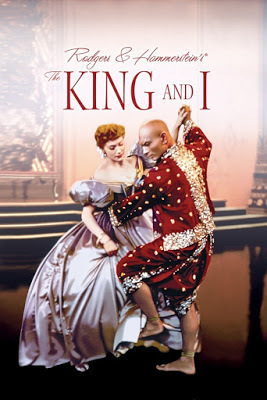
There’s sorrow and some anger in Thailand, where the world’s longest reigning head of state has just died. King Bhumibol the Great, 88 years old at the time of his passing, ascended to the Thai throne in 1946, when he was just 19. I visited Thailand in 1967, staying in the home of a well-connected Thai family, and I can attest to the admiration and affection King Bhumibol and his consort, Queen Sirikit, inspired. He, well educated in Europe, was known to his people as a writer, translator, sailor, inventor, and accomplished jazz musician. His queen was idolized by my host family as someone more beautiful than any movie star. With the king to be succeeded by his less popular son, the various political crises that have plague his nation of late are sure to intensify.
Thailand was a calmer place when I was there. One thing that stands out for me is the fact that everything connected with Rodgers and Hammerstein’s beloved musical, The King and I, was banned, on the grounds that it was disrespectful to the monarchy. The musical is based on the true story of a Welsh teacher, Anna Leonowens, who traveled to what was then called Siam to instruct the children of King Rama IV, at a time when the kingdom was starting to turn toward the west for new ideas. We westerners have always loved the character of this mighty but troubled king, as portrayed by Yul Brynner on stage and on film. Thais, though, have traditionally felt that this ancestor of the current monarchy was much diminished in the show’s portrayal of him, especially by the suggestion that a British woman was his intellectual equal and a true power behind the throne.
I don’t pretend to know much about Thai history. But I do know that The King and I is a glorious musical, humane and intelligent as well as tuneful. For my money, it may be the best transfer of a Rodgers and Hammerstein Broadway hit from the stage to the screen. (This may be heresy, but I’m not entirely a fan of the Julie Andrews/Christopher Plummer The Sound of Music.) A book I’ve just been reading, Jack Viertel’s The Secret Life of the American Musical, makes a convincing case for the structural integrity of The King and Ias a stage play. Viertel pays special tribute to the “Shall We Dance?” scene, a glorious romp that is covertly almost a love scene between a Welsh widow and a much-married Siamese king.
One thing that has long fascinated me about The King and I is how creatively the musical team has used Thai musical instruments and dance moves to add an exotic eastern flavor to an essentially western score. During my long-ago trip to Thailand, I remember visiting a young monk who was a relative of my friends. (All young Thai men were expected to serve as Buddhist monks for a year or so before returning to the secular world.) Somehow this young monk had gotten hold of a soundtrack recording of The King and I. It may have been banned, but he was playing it . . . and (in his saffron robes) was happily dancing.
Speaking of which, the phrase “Shall We Dance?” ended up as the title of a wonderful Japanese movie. Released in 1996, it’s the charming story of a shy accountant whose life changes for the better when he secretly takes up ballroom dancing. I haven’t seen the Richard Gere remake, but I doubt this has the heart (and the cultural specificity) of the Japanese original.
This morning I discussed the king’s death with a Thai woman. Though she has lived in California for 20 years, she had to fight back tears in speaking about the monarch who had served as a father to his people throughout her life. She tells me, though, that The King and I (and other versions of the “Anna and the King” story like the non-musical Jodie Foster/Yun-Fat Chow film from 1999 ) are no longer banned.
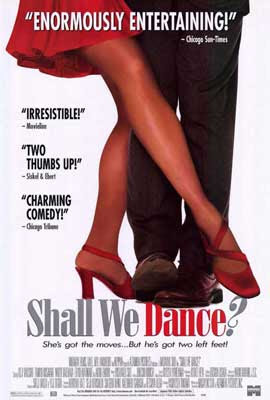
Published on October 18, 2016 12:10
Beverly in Movieland
I write twice weekly, covering topics relating to movies, moviemaking, and growing up Hollywood-adjacent. I believe that movies can change lives, and I'm always happy to hear from readers who'd like t
I write twice weekly, covering topics relating to movies, moviemaking, and growing up Hollywood-adjacent. I believe that movies can change lives, and I'm always happy to hear from readers who'd like to discuss that point.
...more
- Beverly Gray's profile
- 10 followers



